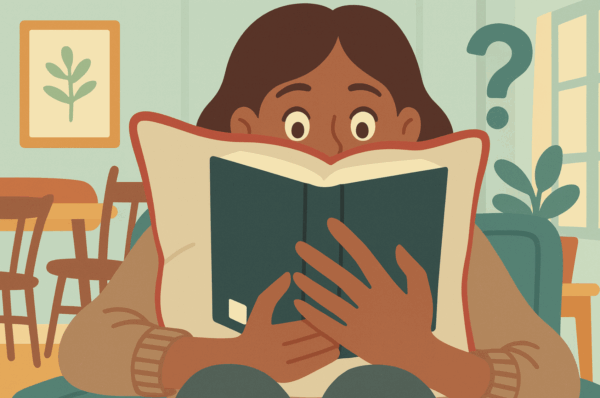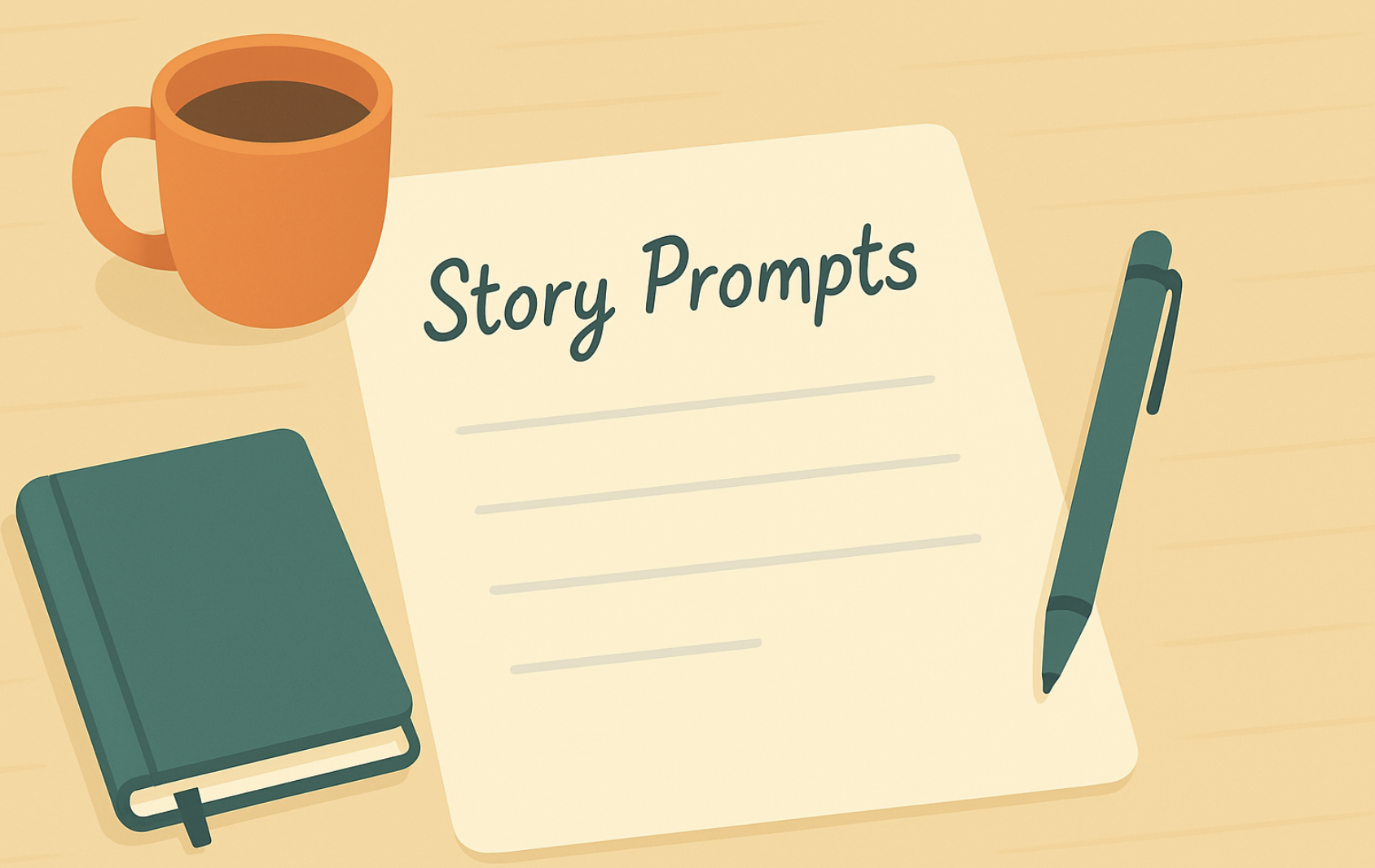You’re reading a mystery novel. The butler serves tea with an oddly specific mention of almond-flavored biscuits. You think nothing of it—until ten chapters later when someone keels over, and ding ding ding: cyanide. Suddenly, that casual snack feels more like a neon sign screaming Pay attention! Welcome to the sly magic of foreshadowing.
So, what is foreshadowing, exactly? It’s the literary version of a wink—an artful hint that something is coming, whether it’s doom, delight, or plot twist chaos. From subtle symbols to bold proclamations, writers use these sneaky signals to build tension, deepen themes, and reward observant readers.
In this article, we’re breaking down the foreshadowing definition, why the technique works so well, and the best examples of foreshadowing in literature. We’ll unpack famous moments that left breadcrumbs before the Big Bang—and even call out a few flops. Grab your magnifying glass—things are about to get suspiciously interesting.
What Is Foreshadowing? (And Why Writers Love Playing Psychic)
At its core, foreshadowing is the art of dropping subtle (or not-so-subtle) hints about what’s to come. It’s a narrative tool used by writers to build anticipation, give the plot a sense of direction, and often add a dash of dramatic irony. It’s like telling your reader, Hey, keep an eye on this—it’s going to matter later. And when it works, it’s like a magic trick: the clues were there all along, but you only realize it once the curtain falls.
So, what is foreshadowing, exactly? Simply put, it’s a literary device that gives the audience glimpses of future events, making the unfolding story feel more cohesive and well-crafted. Whether it’s a storm cloud hanging ominously in the background or a character’s cryptic warning, foreshadowing creates a connection between past, present, and future events, knitting the narrative together in ways that feel both surprising and inevitable.
There are two main flavors of foreshadowing: subtle and overt. Subtle foreshadowing might hide clues in a character’s dialogue or actions, requiring a keen eye to spot them. It’s like a puzzle piece hidden in plain sight. Overt foreshadowing, on the other hand, is more like a neon sign. Think of an ominous prophecy or a character saying, “I have a bad feeling about this.” Both approaches can be effective, depending on the tone and pacing of the story.
For readers, foreshadowing keeps them engaged, allowing them to feel like they’re in on a secret, while still letting the eventual payoff land with a punch. For writers, it’s a way to add depth, satisfyingly tying together narrative threads that might have otherwise felt disconnected. It’s like creating a roadmap for your readers, but allowing them to discover the twists and turns on their own terms.
Why Foreshadowing Works: The Brain Is Wired for Clues
Humans love patterns. It’s in our DNA. From spotting shapes in the clouds to decoding secret messages in a jumbled pile of data, our brains are hardwired to look for clues, especially when those clues lead to something exciting or mysterious. Foreshadowing taps into this primal instinct. It’s like a game of hide-and-seek with the plot, where the story is silently whispering, I dare you to figure it out before it happens.
Think about your favorite suspenseful moments in TV or film. Breaking Bad, for example, is a masterclass in foreshadowing. The little details—like Walter White’s early, seemingly innocuous actions—stack up, making his eventual transformation feel both shocking and inevitable. Or The Sixth Sense, where the entire plot hinges on a jaw-dropping twist that you can only appreciate once you rewatch it with the subtle clues already planted. These moments feel even more satisfying because the story’s clues were right there all along, hiding in plain sight.
This is why we love literary clues—they give us that delicious thrill of almost knowing what’s coming, without being handed the answer outright. It’s like solving a mystery before the detective does. Writers understand this psychological craving, and they use foreshadowing to tease and tantalize, keeping us hooked on the journey without giving away the ending too soon. Our brains crave this connection between cause and effect, and foreshadowing satisfies that craving like a perfectly executed punchline.
Sneaky Storytelling: The Best Examples of Foreshadowing in Literature
Foreshadowing is at its best when it subtly sets the stage for major plot twists or tragic moments. These iconic examples from literature showcase how a well-placed hint can make an ending not only surprising but inevitable. Here are a few of the best examples of foreshadowing that had us all looking back with awe:
1. Of Mice and Men by John Steinbeck
In Steinbeck’s classic, the foreshadowing moment comes early when George tells Lennie to hide in the brush if he ever gets in trouble. This seemingly casual instruction feels like just another part of their nomadic lifestyle, but it becomes tragic foreshadowing when Lennie accidentally kills Curley’s wife. The payoff? The exact spot George told Lennie to hide becomes the place where George ends up having to make the hardest decision of his life. This example of foreshadowing is both heartbreaking and inevitable, turning their friendship into a poignant commentary on dreams and despair.
2. Romeo and Juliet by William Shakespeare
Shakespeare is a master of foreshadowing, and nowhere is it more evident than in the prologue of Romeo and Juliet. The chorus famously describes the lovers as “star-crossed,” signaling their tragic fate before they even meet. The payoff comes when their ill-fated love ultimately leads to their deaths, fulfilling the prophecy. By foreshadowing their doom from the very beginning, Shakespeare not only builds suspense but also deepens the emotional impact of the play’s tragic conclusion.
3. Harry Potter and the Sorcerer’s Stone by J.K. Rowling
In the first book of the Harry Potter series, foreshadowing is everywhere, particularly through the seemingly small detail of the Mirror of Erised. Harry’s deep longing to see his parents foreshadows his eventual confrontation with his past and his need to let go of that desire to move forward. The payoff occurs when Harry learns to make choices based on who he is, not on the past he can never reclaim. This early hint connects to Harry’s overall character arc and highlights his growth throughout the series.
4. The Great Gatsby by F. Scott Fitzgerald
In The Great Gatsby, the green light at the end of Daisy’s dock is an iconic symbol that foreshadows Gatsby’s obsessive desire for a future with Daisy. It glows through the mist, representing both hope and illusion. The payoff is crushingly clear by the end of the novel: Gatsby’s unattainable dream of rekindling a perfect past with Daisy is his ultimate downfall. Fitzgerald’s use of the green light gives the reader a sense of inevitability, where Gatsby’s tragic end feels both tragic and somehow fated.
5. 1984 by George Orwell
In 1984, Orwell uses foreshadowing to hint at Winston’s eventual betrayal. Early in the story, Winston writes in his diary, “Freedom is the freedom to say that two plus two make four.” This small but significant moment foreshadows Winston’s ultimate confrontation with the Party’s control over truth and reality. The payoff happens when Winston is broken and forced to accept that “2 + 2 = 5” under the pressure of the Party’s oppression. Orwell’s subtle foreshadowing of Winston’s mental collapse builds a chilling sense of inevitability.
6. The Hunger Games by Suzanne Collins
In The Hunger Games, foreshadowing plays a key role in setting the stage for Katniss’s survival and rebellion. Early in the story, Katniss volunteers to take her sister’s place in the Hunger Games—a moment that foreshadows not just her physical struggle, but her symbolic role as a martyr and leader for the oppressed. The payoff comes when Katniss’s symbolic act of defiance (using berries to threaten the Capitol) sparks the rebellion that ultimately leads to her transformation into a leader. The foreshadowing not only creates tension but also establishes Katniss as a reluctant hero whose actions speak louder than her words.
These examples of foreshadowing in literature show that a well-placed clue can do more than just hint at future events—it can deepen the emotional resonance of a story and give readers that satisfying “Aha!” moment when they finally piece everything together. Whether subtle or overt, foreshadowing enhances storytelling, enriching the narrative while keeping readers on the edge of their seats.
Foreshadowing Fails: When Clues Go Nowhere
As much as foreshadowing can elevate a story, it can also fall flat when done poorly. Sometimes, writers get a little too excited about planting clues, only to leave them dangling like a forgotten thread. It’s like showing a loaded gun in Act 1 and never firing it—everyone’s left wondering, What was the point of that?
Take, for example, the infamous “red herrings” in mystery novels. In some cases, authors throw in odd details—like a character constantly adjusting their glasses or mentioning a past life of intrigue—only for those details to never have any significance. The reader is left with an eye roll and a sense of “Wait… was that supposed to mean something?”
Then there’s the Star Wars: The Rise of Skywalker scenario. In an attempt to foreshadow Rey’s parentage, the movie teases multiple clues about her origins, only to deliver a convoluted, last-minute twist. The foreshadowing ultimately leads to confusion rather than a satisfying payoff, making it feel like a narrative cheat rather than a clever setup.
A classic pitfall in story hints is when writers overdo it, leaving so many clues that they become glaringly obvious. If a prophecy is repeated every other chapter, or a character keeps referencing a looming disaster, you’re not foreshadowing—you’re overexposing the plot. A good hint should make readers feel clever when they spot it, not like they’ve been hit over the head with it.
In the end, the key to successful literary clues is balance. Too little, and the twist feels out of nowhere. Too much, and it’s like handing the reader a cheat sheet. Keep it subtle, keep it meaningful, and most importantly, make sure it actually goes somewhere.
How to Use Foreshadowing Like a Literary Illusionist
Mastering foreshadowing is like performing a magic trick: you want to reveal just enough to spark curiosity, but not so much that you spoil the illusion. The trick is in the hint-dropping—planting clues that make the reader feel clever when they figure them out, without ruining the surprise. So, how do you pull off this literary sleight of hand?
Start by choosing the right type of foreshadowing for your story:
- Symbolic foreshadowing is the subtle art of using objects or images to hint at future events. Think of the green light in The Great Gatsby or the mockingjay pin in The Hunger Games—symbols that take on deeper meaning as the plot unfolds.
- Direct foreshadowing might come in the form of a character making an ominous prediction or casually mentioning something that seems trivial but later becomes significant.
- Dialogue-based foreshadowing is where characters unknowingly hint at what’s to come through their conversations. Maybe one character says, “I have a bad feeling about this,” only for that feeling to prove dead-on.
The key is to keep it subtle, like breadcrumbs scattered along the path. Too many, and you’re just giving away the ending. Too few, and the payoff feels disconnected. Think of it like a crystal ball—you’re giving glimpses of the future, but not the full picture.
One writer’s best friend when it comes to narrative planting is Chekhov’s Gun: the idea that if you introduce an object or detail, it must have a purpose later on. If you mention a rifle in Chapter 2, by Chapter 8, that rifle should be fired—or at least hinted at, in a way that ties back to the narrative.
In short, foreshadowing is about making the reader feel like they’re uncovering hidden truths, not being told what happens next. Use your clues wisely, plant them with care, and let your story unfold like a well-executed magic trick.
Now You See It…
Foreshadowing is the ultimate storytelling sleight of hand. Whether it’s through subtle clues, symbolic imagery, or direct hints, it’s the perfect tool to make your story feel cohesive, suspenseful, and satisfying. From Shakespeare’s tragic predictions to modern-day mysteries, the art of foreshadowing connects the dots in a way that keeps readers hooked.
Next time you dive into a book, pay attention to the quiet whispers of the story—the subtle clues and hidden hints that shape the journey ahead. Foreshadowing is a delicate dance between what’s seen and what’s unseen, a reminder that every moment in a narrative is connected, every detail has meaning. It’s the thread that ties the past to the future, making every twist and turn feel both surprising and inevitable.
So, as you turn the pages, ask yourself: What’s lurking just out of sight, waiting to reveal itself? The beauty of foreshadowing lies in how it transforms the ordinary into the extraordinary.
FAQs – Examples of Foreshadowing
Q1: How do you foreshadow a character’s death?
Foreshadowing a character’s death can be done subtly or overtly, depending on the tone and style of the story. You can hint at it through symbols, actions, or dialogue. For example, a character might express a desire to see a particular place before they die, or there could be imagery associated with death, like references to dark clouds, an animal’s ominous behavior, or a lingering sense of doom. The key is to plant just enough clues that the reader senses something is coming, but doesn’t fully anticipate the exact moment or cause of death.
Q2: What is foreshadowing in life?
Foreshadowing in life is the idea that events or circumstances often provide hints about future occurrences. Just like in stories, sometimes our actions, words, or even a feeling of déjà vu can point to something significant about to happen. It’s the way we can feel a shift in the air or notice small signs that suggest a major life change is approaching. In a metaphorical sense, foreshadowing in life allows us to prepare for what’s ahead, whether it’s a job opportunity, a relationship change, or a personal milestone.
Q3: What words indicate foreshadowing?
Certain words or phrases act as clues that suggest foreshadowing. These can include terms like “ominous,” “dark,” “dread,” “fate,” “destiny,” “last wish,” and “final moments.” Dialogue or narrative descriptions that evoke a sense of finality, a prophecy, or an impending event also signal foreshadowing. Phrases such as “If only I had known” or “This was the last time” often hint at what’s to come.
Q4: What is an example of foreshadowing analysis?
A notable example of foreshadowing analysis can be found in The Hobbit by J.R.R. Tolkien. Early in the story, Bilbo Baggins stumbles upon a mysterious object in the Goblin tunnels—the One Ring. At this point, the significance of the ring is unclear, and its true power is not yet revealed. However, this moment is a key piece of foreshadowing that hints at the central conflict of The Lord of the Rings trilogy. The discovery of the ring, though seemingly minor, sets in motion Bilbo’s eventual relationship with the artifact and foreshadows the dangerous influence it will have on both him and others. The ring’s initial appearance subtly hints at the far-reaching consequences of its power, laying the groundwork for the larger narrative to come, where its importance and danger are fully realized. This foreshadowing is crucial to understanding the interwoven plots and characters of Tolkien’s universe.
Q5: How is foreshadowing used in a story?
Foreshadowing is a crucial storytelling tool that helps build suspense, create cohesion, and hint at future events. It allows writers to plant clues early on that will pay off later, making the story feel more structured and satisfying. Foreshadowing can take many forms: symbolic imagery (such as a storm cloud foreshadowing a major conflict), direct dialogue (a character’s warning about danger), or even subtle narrative hints (a character’s unexplained anxiety). Well-executed foreshadowing allows readers to sense that something big is coming without knowing exactly what it will be, which keeps them engaged and excited to see how events unfold.
Q6: What makes foreshadowing effective in storytelling?
Effective foreshadowing works by creating a balance between subtlety and clarity. When done well, it offers clues that feel meaningful but not obvious, allowing readers to feel smart when they catch on. It should deepen the impact of the eventual reveal or twist, making it feel both surprising and inevitable. The key is to leave just enough breadcrumbs for the reader to follow while maintaining the suspense. Foreshadowing also enhances the thematic elements of a story, reinforcing the tone and emotional stakes. The best foreshadowing enriches the narrative without giving too much away, letting the story unfold naturally while rewarding observant readers.








